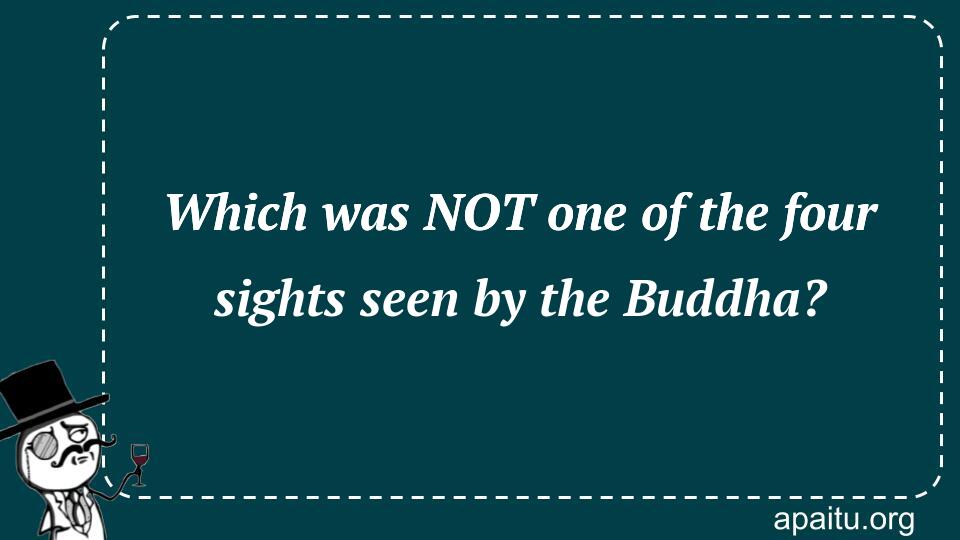Question
Here is the question : WHICH WAS NOT ONE OF THE FOUR SIGHTS SEEN BY THE BUDDHA?
Option
Here is the option for the question :
- An old man
- A sick man
- A dead man
- An opulent prince
The Answer:
And, the answer for the the question is :
Explanation:
In his youth, Siddhartha Gautama, who would later become the Buddha, left the confines of his palace to get a deeper understanding of the world around him. This event is considered to be the beginning of the Buddhist religion. During his travels, he came across a travelling ascetic, as well as an elderly man, a sick man, and a man who had recently passed away. These encounters caused him to ponder the purpose of life and the ubiquitous pain that it entails. This event is what motivated Gautama to embark on his own journey to become an ascetic and look for Nirvana.

The Buddha, also known as Siddhartha Gautama, was a spiritual leader who lived in India during the 5th century BCE. He founded Buddhism, a religion that emphasizes the importance of following the Eightfold Path to achieve enlightenment and liberation from suffering. According to Buddhist tradition, before he became the Buddha, Siddhartha experienced what are known as the “four sights,” which ultimately led him to renounce his privileged life and seek spiritual enlightenment.
The four sights that the Buddha is said to have seen are an old man, a sick man, a dead body, and a wandering ascetic. These sights, which were all previously unfamiliar to Siddhartha, deeply disturbed him and made him question the nature of existence and the meaning of life. He realized that all beings are subject to the suffering and impermanence that he had witnessed, and that material wealth and worldly pleasures were ultimately meaningless in the face of this reality.
an opulent prince was not one of the four sights seen by the Buddha. However, this misconception may stem from the fact that Siddhartha himself was a prince before he renounced his status and embarked on his spiritual journey. He was born into a wealthy and powerful family in the kingdom of Kapilavastu, and was raised in luxury and comfort. As a young man, he married and had a son, and was expected to assume the throne and continue the family’s legacy of power and wealth.
However, Siddhartha’s privileged life did not bring him happiness or fulfillment. He was plagued by questions about the nature of existence and the suffering he saw around him. Despite his father’s attempts to shield him from the harsh realities of the world, Siddhartha eventually left the palace and encountered the four sights that would change his life forever.
The absence of an opulent prince among the four sights is significant because it underscores the Buddha’s rejection of material wealth and worldly pleasures as a path to enlightenment. Siddhartha’s own experience as a prince showed him that even the most privileged and powerful individuals are not immune to the suffering and impermanence of life. He realized that true happiness and liberation from suffering could not be found in material possessions or worldly accomplishments, but only through a spiritual path of self-discovery and compassion for all beings.
while an opulent prince was not one of the four sights seen by the Buddha, his own experience as a prince played a crucial role in his spiritual journey. Siddhartha’s rejection of material wealth and worldly pleasures was a central tenet of his teachings, and remains a fundamental principle of Buddhism to this day. The four sights that he witnessed served as a catalyst for his enlightenment, and continue to inspire seekers of truth and wisdom around the world.